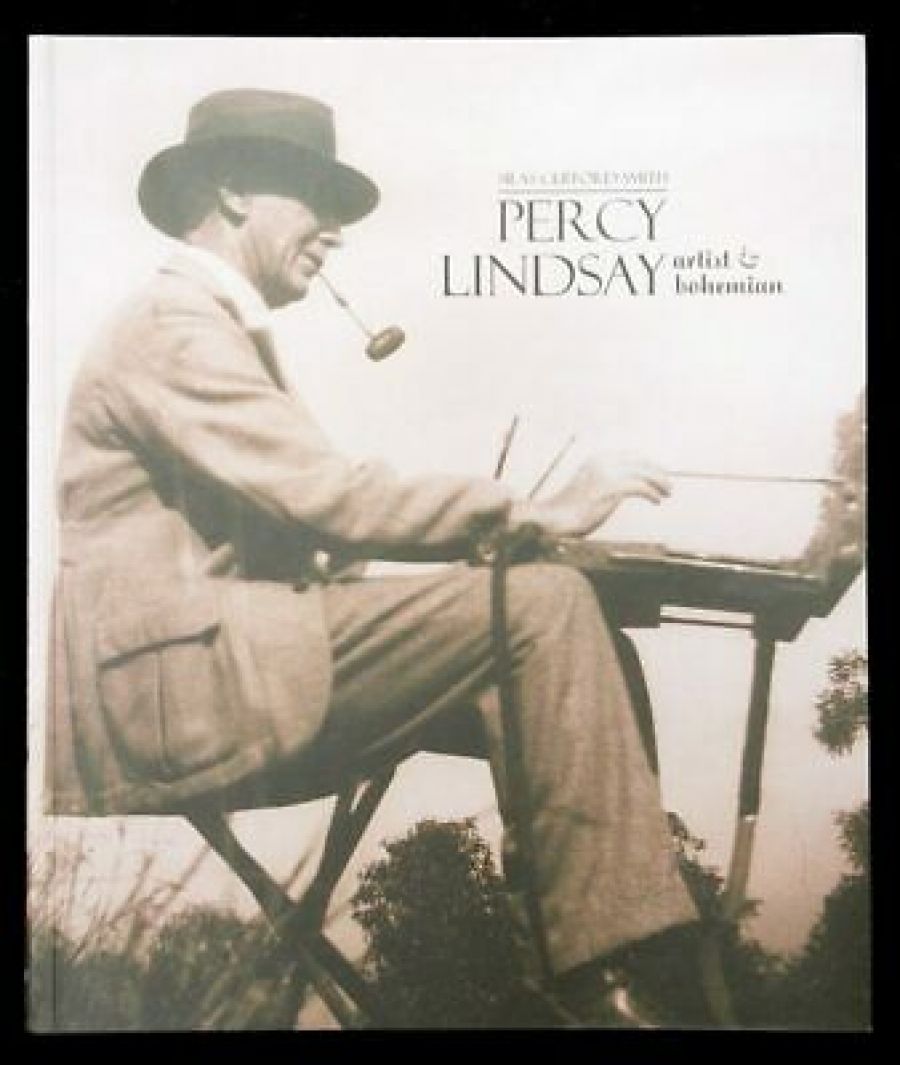
- Free Article: No
- Contents Category: Art
- Review Article: Yes
- Online Only: No
- Custom Highlight Text:
Percy Lindsay was the eldest and least well-known of the remarkable Lindsay brothers (the others were Norman, Lionel, and Darryl). He was born at Creswick, Victoria, in 1870, where he received his initial artistic training before moving to Melbourne in 1895. It was there that year that he first exhibited paintings, in a group show that included such luminaries as David Davies, E. Phillips Fox, and Walter Withers (the latter also taught him). Lindsay continued exhibiting his paintings until 1951: he had seven solo exhibitions between 1926 and 1935. In 1901 he took up illustrative work, which he produced for the remainder of his career. Lindsay married in 1907 and moved to Sydney in 1918, where he lived until his death in 1952.
- Book 1 Title: Percy Lindsay
- Book 1 Subtitle: Artist & Bohemian
- Book 1 Biblio: Australian Scholarly Publishing, $59.95 pb, 156 pp
Lindsay’s output was considerable, with more than 500 paintings and 2000 published illustrations. His quality as an artist varies, but the best landscape paintings reveal his undoubted expertise with colour, tone, and form. However, it was his skill as a draughtsman and his commercial black-and-white illustrative work that paid the rent and brought Lindsay to a wider public. From 1903 to 1944 he provided illustrations for ninety-eight books published in Australia. He was also, from 1918 to 1949, a regular contributor of cartoons (or ‘joke blocks’) to the Bulletin, for which his three brothers, and his sister Ruby, all worked at various times. He also supplied some 200 illustrations to the Lone Hand, a magazine that ran from 1907 to 1921.
Until now, Percy Lindsay has lacked a full biography. Here, he has been well served with a balanced assessment that presents an engaging but not particularly ambitious figure, a talented painter and draughtsman, fond of company and overfond of drink. Photographs, selected paintings, and illustrative works, along with useful appendices, including a ‘who’s who’, exhibition listings, and illustrated book titles, make this a most practical volume, which fills a gap in biographies of Australian artists.


Comments powered by CComment